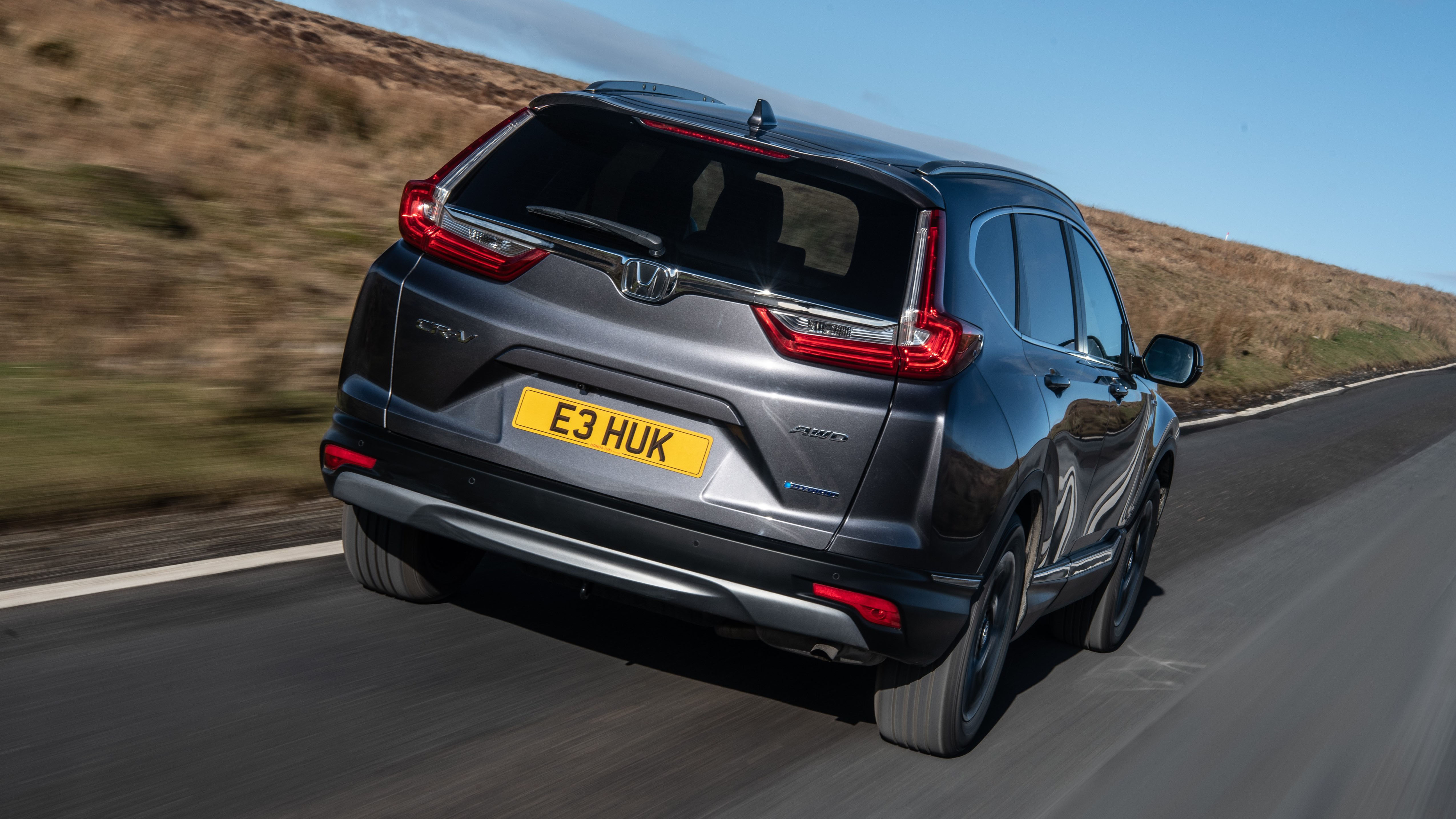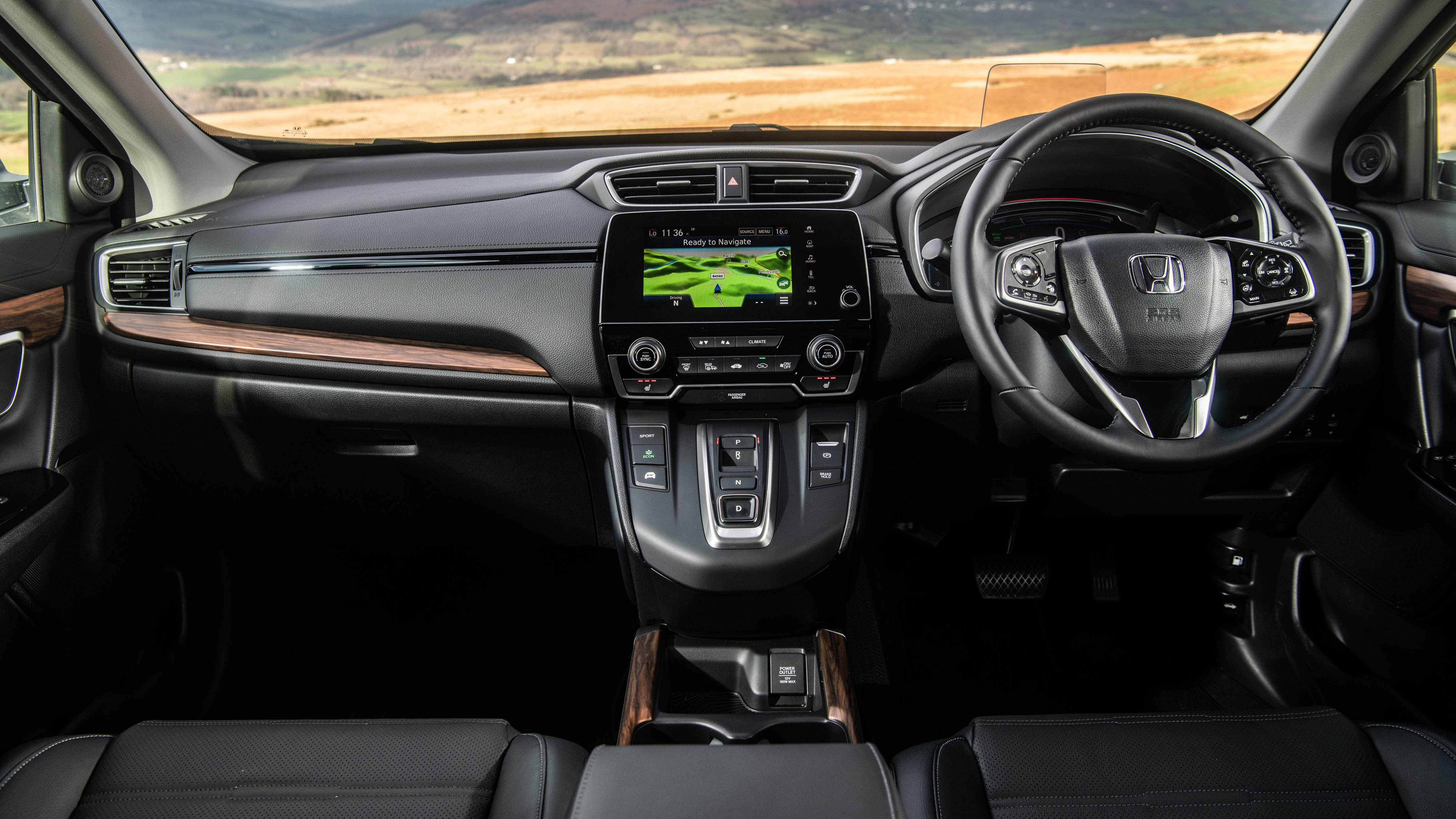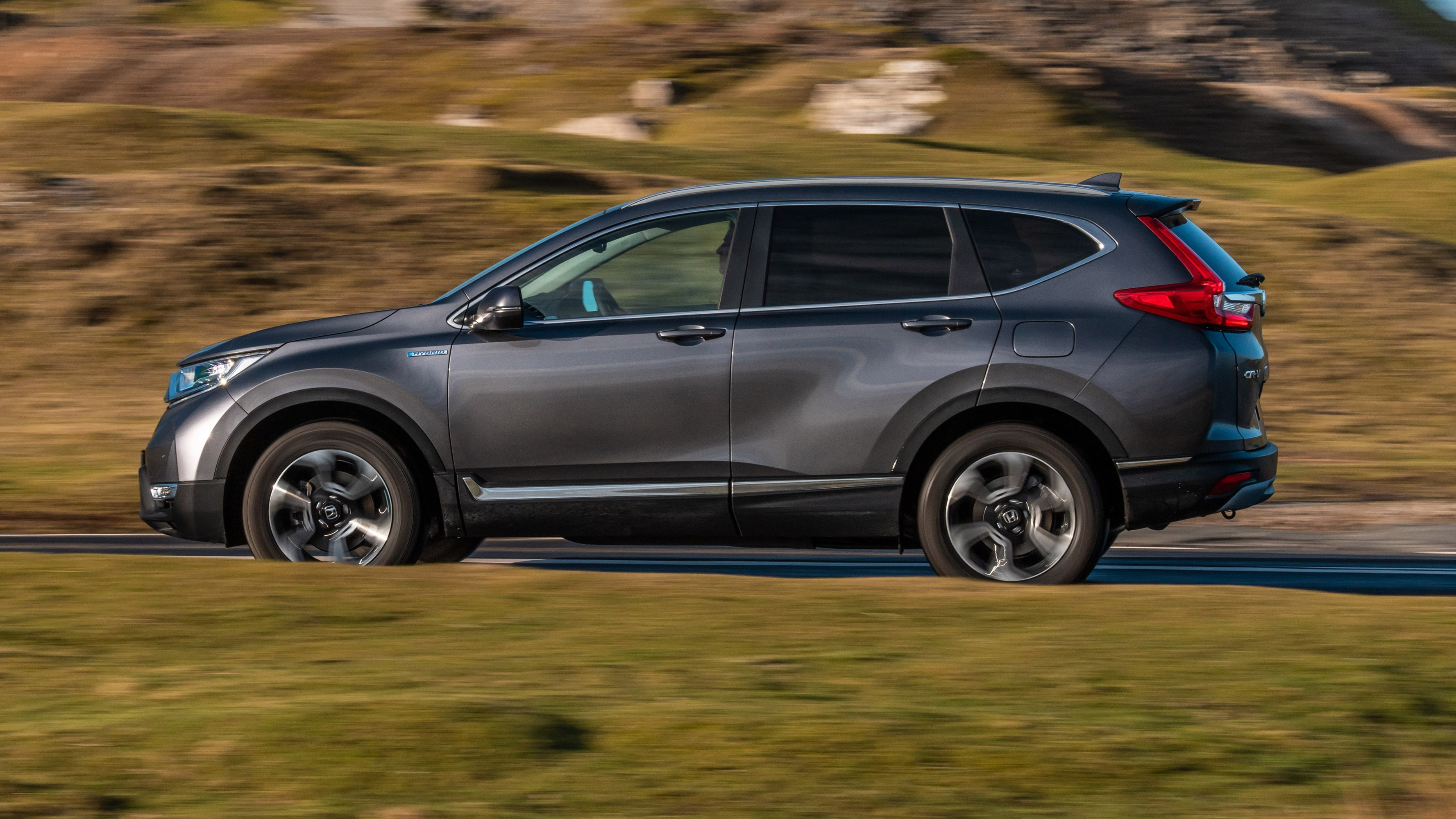
Interior
What is it like on the inside?
A little dated, to be frank with you. But we’ll focus on the good first – the material quality is broadly on point, everything feels reassuringly solid, the front seats are comfortable and together with reach/rake adjustment for the wheel, most drivers ought to be able to get comfy.
But we can’t help but feel that the design/layout of the controls feels a bit old. Take the Peugeot 3008 and its space-age ‘i-Cockpit’ interior, for example – the CR-V looks leagues behind in comparison. Honda has replaced the CVT’s flimsy gear lever with a switch-style transmission selector, but it still looks very ordinary.
What’s the tech like?
Behind the steering wheel sits a full-colour seven-inch instrument cluster, flanked by battery charge status and fuel-level gauges. The screen itself displays a large digital speedometer and linear power gauge with a charge status indicator – all useful info, if not the most visually appealing.
Base spec models get a five-inch infotainment screen, with anything upwards from that getting a seven-inch unit. It can do things – many of them – but Honda’s UI isn’t easy enough to use, the graphics aren’t good enough and the navigation is childish. You’ll likely just plug your phone in and use Apple CarPlay/Android Auto instead, which comes as standard on SE models and above.
Fortunately, the air conditioning controls aren’t buried within the touchscreen, with physical knobs for adjusting the temperature and fan speed. Big tick.
What’s passenger space like?
Comfortable enough – the wider track, longer wheelbase and sculpted front-seats give good legroom in the second row, and because the rear-doors open to almost 90 degrees getting things/tiny people in and out should be easy as.
The battery under the boot floor, however, means there’s no space for a third row of seats and also eats into boot space, though you still get a reasonable 497 litres with the seats up and 1,694 litres with the seats down. That compares to 504/1,585 litres in the Nissan Qashqai, 580/1,690 litres in the Toyota RAV4, and 615/1,655 litres in the VW Tiguan.
The boot floor is pretty much level with the boot lip – good for loading and unloading the weekly shop – and the second row also offers a handy 60/40 split. Storage is ample in the passenger cabin too, and Honda’s moved the speakers up so all four door bins are way, way bigger than before.
Featured

Trending this week
- Car Review
BMW 1 Series






